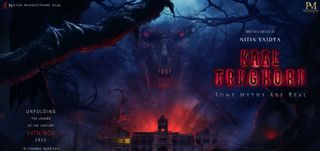Mangal Pandey - The Rising Movie Review
You have to hand it to Aamir Khan. He does deliver a "polished" performance. From head to toe, he's tanned in what looks like a light shade of boot polish to play that marvel from the freedom movement, Mangal Pandey, who, it is rightly believed, pioneered India's long struggle to liberty from British rule.
Often the script's searing and vicious vagaries get more oppressive than the brutal "Gora Log" (white people) who stand around in costumes that seem to have just been bought off the shelf. Wearing their red uniforms in a display of subverted Nazism, the colonial brigade in "Mangal Pandey: The Rising" (shouldn't that have been The Uprising?) is like a drill for a play on uniformed travesty.
There is no lived-in feeling to the characters, specially the white-skinned ones. Cosmetic colonialism was just fine in Manmohan Desai's "Mard" where the mighty Bachchan had towered over the sneering foreigners like a charismatic colossus.
But here? We credited Mehta with more subtlety than is obtainable the entire peppery red-and-pastel length and breadth of this patriotic whipped-cream of a yarn.
Frequently, the build-up within a sequence is of far more consequence than its culmination and final motivation.
Specially problematic is the Aamir-Rani liaison. The courtship, mimicking the Devdas-Chandramukhi relationship (he flinches when the prostitute tries to touch him) lacks essential verve.
Rani's character of the prostitute is completely inconsistent with history and with the film's mood. One minute she's being auctioned in the market place, much to the disgust of a British woman, the next minute she is doing a pouty, lip-biting bosom-heaving "mujra" (courtesan's song) in Madame Kirron Kher's elaborately done-up brothel (a touch of Sanjay Leela Bhansali's "Devdas").
Rather than play the prostitute's character for poignancy, Rani makes Heera saucy and playful...a kind of Babli (the frisky character she played in Bunty Aur Babli) of the flesh trade.
Surprisingly, Amisha Patel's briefer cameo as Jwala comes off comparatively well. The sequence where the British officer Gordon followed by Mangal, rescue her from being burnt alive during the barbaric sati ritual, is shot in exquisite tones of white, blue, orange and sepia. She later has some truly tender moments with her white saviour.
You wish there was more of the Jwala-Gordon relationship rather than the just mandatory love scene (albeit done aesthetically) where a lone tear rolls off the rescued damsel's eye.
Appealing visuals do not constitute a powerful narration. Ironically, Gordon comes across as a far more tenable and magnetic character than Mangal Pandey. The conscientious white man's colonial dilemma is brilliantly etched by Toby Stephens, an actor we have seen little of but would love to see more of in future. This is the first time that a foreigner in a Hindi film gets applause without the audience knowing what he says!
Aamir's moustache, hair and bulging eyes do all the talking and screaming for his historical character. Whether it is a blemish in the script, characterization or the actor, we don't know. But Mangal Pandey comes across more as a cardboard hero than a true martyr of independence. His climactic hurrah where he is shown single-handedly taking on a raging battalion of British men is deftly shot, but swiftly shot down by the inconsistent editing.
The scenes written to spotlight Mangal's heroism are utterly ludicrous. "I AM Hindustan" -- Aamir pompously pronounces to the princely gallery of supporters. He sounds like a kid at a toy store playing patriotic games.
Lacking a sense of intrinsic irony and utterly devoid of modesty, Aamir's Mangal Pandey is a surly, self-important comic-strip super-hero, rendered shadowy and inaccessible by the actor's inability to connect history with cinematic heroism.
Aamir's Mangal Pandey is martyr trapped in limbo.
Unlike "Lagaan" (a film to which Mangal Pandey bears absolutely no resemb



















